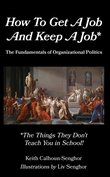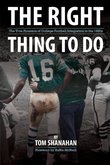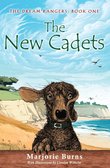
by Bibi Dumon Tak ; illustrated by Annemarie van Haeringen ; translated by Nancy Forest-Flier ‧ RELEASE DATE: Feb. 4, 2025
A brilliant use of anthropomorphic animals, serving up facts and entertainment.
Hilarity ensues when animals give presentations about other animals in this translated Dutch import by two award-winning creators.
Upending the assumptions of readers who are used to seeing animals through a human lens, a variety of animals highlight other species in a version of class presentations. A cleaner fish speaks about sharks, in the process providing just as much information on the habits of cleaner fish themselves. A blackbird gives a presentation on the rose-ringed parakeet, before the verbose rose-ringed parakeet runs hilariously overtime in a talk about songbirds. The raucous speakers, who aren’t always identified, often interrupt one another with questions and comments, creating a Greek chorus effect. Tensions arise; the animals attempt to shut down the Gila monster out of fear of his “breath of death.” Cleverly, in defending himself, he manages to convey an abundance of information. The characters’ personalities sometimes emerge in ways that will disrupt readers’ expectations. The creatures represent a global mix—a southern cassowary from Australia presents on hummingbirds of the Americas. The sections are interconnected through satisfying allusions that help create anticipation. Humorous, charming, childlike illustrations of the animals match the off-kilter tone of the text. Rounding out this stellar package, the ending integrates the index—put together by an earthworm and a midwife toad—into the story, while seamlessly and amusingly introducing young readers to how an index functions.
A brilliant use of anthropomorphic animals, serving up facts and entertainment. (Nonfiction. 8-12)Pub Date: Feb. 4, 2025
ISBN: 9781646145102
Page Count: 224
Publisher: Levine Querido
Review Posted Online: Oct. 26, 2024
Kirkus Reviews Issue: Dec. 1, 2024
Share your opinion of this book
More by Bibi Dumon Tak
BOOK REVIEW
by Bibi Dumon Tak ; illustrated by Annemarie van Haeringen ; translated by Laura Watkinson
BOOK REVIEW
by Annemarie van Haeringen ; illustrated by Annemarie van Haeringen
BOOK REVIEW
by Annemarie van Haeringen ; illustrated by Annemarie van Haeringen
More About This Book
PERSPECTIVES

by Joanna Rzezak ; illustrated by Joanna Rzezak ‧ RELEASE DATE: May 18, 2021
Friends of these pollinators will be best served elsewhere.
This book is buzzing with trivia.
Follow a swarm of bees as they leave a beekeeper’s apiary in search of a new home. As the scout bees traverse the fields, readers are provided with a potpourri of facts and statements about bees. The information is scattered—much like the scout bees—and as a result, both the nominal plot and informational content are tissue-thin. There are some interesting facts throughout the book, but many pieces of trivia are too, well trivial, to prove useful. For example, as the bees travel, readers learn that “onion flowers are round and fluffy” and “fennel is a plant that is used in cooking.” Other facts are oversimplified and as a result are not accurate. For example, monofloral honey is defined as “made by bees who visit just one kind of flower” with no acknowledgment of the fact that bees may range widely, and swarm activity is described as a springtime event, when it can also occur in summer and early fall. The information in the book, such as species identification and measurement units, is directed toward British readers. The flat, thin-lined artwork does little to enhance the story, but an “I spy” game challenging readers to find a specific bee throughout is amusing.
Friends of these pollinators will be best served elsewhere. (Informational picture book. 8-10)Pub Date: May 18, 2021
ISBN: 978-0-500-65265-7
Page Count: 32
Publisher: Thames & Hudson
Review Posted Online: April 13, 2021
Kirkus Reviews Issue: May 1, 2021
Share your opinion of this book
More by Joanna Rzezak
BOOK REVIEW
by Joanna Rzezak ; illustrated by Joanna Rzezak
BOOK REVIEW
by Joanna Rzezak ; illustrated by Joanna Rzezak

edited by Mayim Bialik ‧ RELEASE DATE: Feb. 2, 2021
Contentwise, an arbitrary assortment…but sure to draw fans of comics, of science, or of both.
Flash, Batman, and other characters from the DC Comics universe tackle supervillains and STEM-related topics and sometimes, both.
Credited to 20 writers and illustrators in various combinations, the 10 episodes invite readers to tag along as Mera and Aquaman visit oceanic zones from epipelagic to hadalpelagic; Supergirl helps a young scholar pick a science-project topic by taking her on a tour of the solar system; and Swamp Thing lends Poison Ivy a hand to describe how DNA works (later joining Swamp Kid to scuttle a climate-altering scheme by Arcane). In other episodes, various costumed creations explain the ins and outs of diverse large- and small-scale phenomena, including electricity, atomic structure, forensic techniques, 3-D printing, and the lactate threshold. Presumably on the supposition that the characters will be more familiar to readers than the science, the minilectures tend to start from simple basics, but the figures are mostly both redrawn to look more childlike than in the comics and identified only in passing. Drawing styles and page designs differ from chapter to chapter but not enough to interrupt overall visual unity and flow—and the cast is sufficiently diverse to include roles for superheroes (and villains) of color like Cyborg, Kid Flash, and the Latina Green Lantern, Jessica Cruz. Appended lists of websites and science-based YouTube channels, plus instructions for homespun activities related to each episode, point inspired STEM-winders toward further discoveries.
Contentwise, an arbitrary assortment…but sure to draw fans of comics, of science, or of both. (Graphic nonfiction. 9-12)Pub Date: Feb. 2, 2021
ISBN: 978-1-77950-382-4
Page Count: 160
Publisher: DC
Review Posted Online: Jan. 12, 2021
Kirkus Reviews Issue: Feb. 1, 2021
Share your opinion of this book
More by Mayim Bialik
BOOK REVIEW
by Mayim Bialik
BOOK REVIEW
by Mayim Bialik ; illustrated by Siobhán Gallagher
© Copyright 2025 Kirkus Media LLC. All Rights Reserved.
Hey there, book lover.
We’re glad you found a book that interests you!
We can’t wait for you to join Kirkus!
It’s free and takes less than 10 seconds!
Already have an account? Log in.
OR
Trouble signing in? Retrieve credentials.
Welcome Back!
OR
Trouble signing in? Retrieve credentials.
Don’t fret. We’ll find you.





